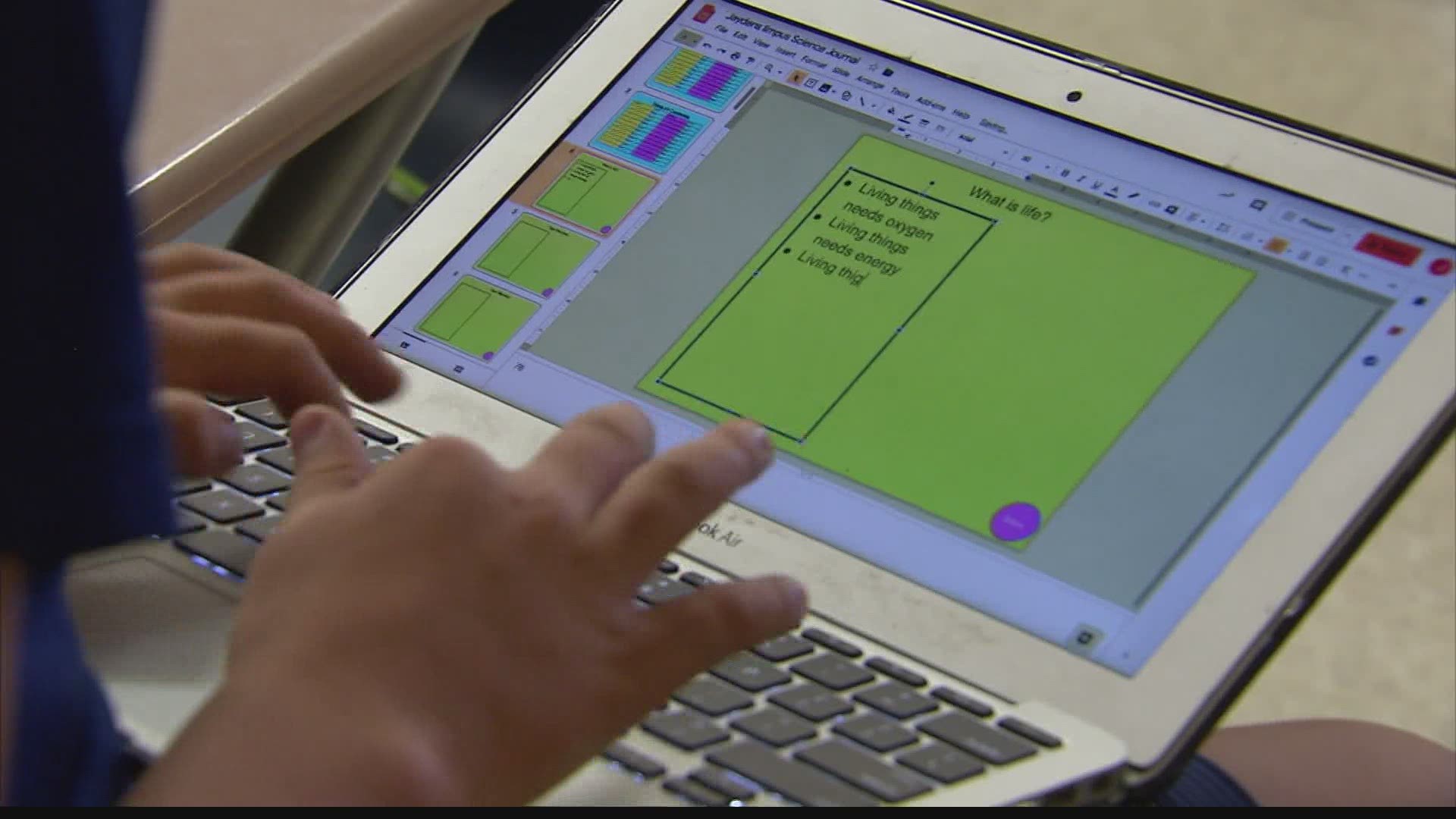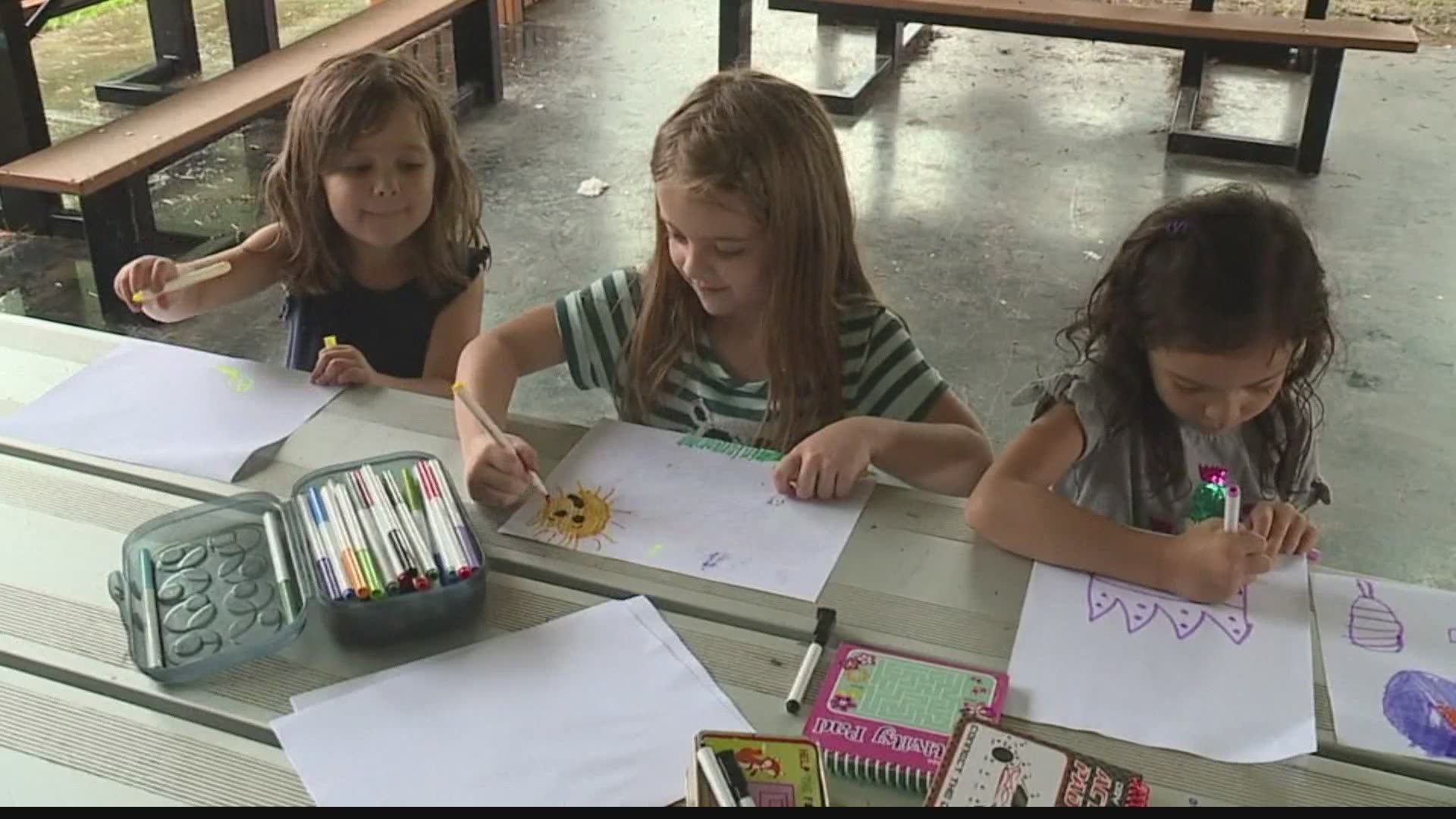INDIANAPOLIS — As schools restart, many parents are struggling to find a logistical or economic solution to child care while their children are e-learning.
That’s why Governor Eric Holcomb issued an executive order to expand child care options for school-aged children who are e-learning.
“Care for infants and toddlers bring on a whole different set of challenges and different sets of supervision and training that we would want people to have that isn’t exactly the same when you’re talking about school-aged children,” said Nicole Norvell, director of the Office of Early Childhood and Out of School Learning.
FOR PARENTS WHO WANT A REGULATED FACILITY TO TAKE THEIR CHILDREN TO
Schools already partner with community-based providers like the YMCA or Boys & Girls Club for after school or during break programs offered within school buildings. Now, because of the governor’s executive order, districts can expand this partnership to e-learning.
These partnerships, or latchkey programs, that ran during break or after school were initially designed for “working parents whose workday may not coincide with the bus pick-up or drop-off,” said Norvell. Technically speaking, legally, under any circumstance, “if you have a bunch of kids in one setting and someone’s being paid or compensated, it is technically a child care,” said Norvell.
But according to the law, these "Latch Key" programs “were exempt from being licensed as a child care, but (the service) had to be delivered in that public school building,” said Norvell.
But the pandemic means e-learning is an option and, in some cases, public school buildings are not open.
“So what the governor’s executive order did was it expanded that to say it could count as an exempt, as a Latch Key program, if it was offered somewhere else, but that still requires a partnership between the school district and that community partner,” said Norvell. “We wanted to be sure there’s ample space for parents to take their kids to those high-quality environments, to get good support during those e-learning days."
She said parents interested in this option should reach out to their school district or their local community partner. If they have any questions about child care options for e-learners, they can always contact the Office of Early Childhood and Out of School Learning’s information line at 1-800-299-1627.
FOR SEVERAL FAMILIES WHO CAN AFFORD A TUTOR OR BABYSITTER
Prior to the governor’s executive order, it would have been illegal to have several kids from several families come together in one place to get tutored or watched for by a babysitter without registering as a daycare. But now, two or three families can legally “come together, (if) they all have a couple of children and they all decide to bring their children to one person’s house and hire someone to come and support them while all the families go to work,” said Norvell.
“To share care in one home, historically, by law, would have been looked at as a child care home, but we know they’re not really trying to operate a child care home…they’re not taking in other community members,” she added.
So the executive order now allows for this. Some central Indiana parents told 13News that when e-learning first began, some parents considered this option but then found it costly.
FOR FAMILIES THAT WANT TO SHARE CHILD CARE RESPONSIBILITIES WITHOUT HIRED HELP
Prior to the executive order, having a group of kids from different families all e-learning together at one person’s home would have been viewed as a child care home. But now, this is legal under the executive order, Norvell said, “as long as they’re school-aged children, no infants or toddlers, and they’re not more than ten children, and it’s during school days - no evenings or weekends."
WHY DOES THE EXECUTIVE ORDER ONLY APPLY TO WEEKDAY AND REGULAR SCHOOL HOURS?
The Office of Early Childhood and Out of School Learning said they wanted to cover the time which parents normally have relied on schools for child care.
“We recognize normally you’re planning for them to be in school and now they’re not because they’re e-learning,” said Norvell.
But what about parents who need childcare outside of school hours?
“Evenings and weekends we’re making the assumption, which may not be always accurate, that you would have had a plan for your child because they wouldn’t have been in school anyways,” said Norvell.
REGULATED VS. UNREGULATED FACILITIES
Child Care Finder is a website “where you’ll see all licensed and regulated care,” said Norvell.
Families can search by area or on a specific travel route.
“You can search your route to work, so it’ll show you all the child cares from your home to your drive to where you’re working,” said Norvell. The service is also available via phone for anyone without internet or who prefers to speak to an individual “who can talk you through those things.”
The state “always encourages” families to go with regulated providers. But if a family chooses an unregulated provider, the state has a list of suggested questions online for parents to ask.
The same list could also serve as guidance questions for regulated providers who should be in adherence with state health safety guidelines. Questions like, “Have your staff had background checks? Have they had training? What’s mealtime look like? And especially in this time of COVID-19, what safety precautions are you taking?” said Norvell.
WHAT ABOUT SENDING MY KIDS TO A FACILITY DURING A PANDEMIC?
The Office of Early Childhood and Out of School Learning acknowledges that some parents may be fearful to send their kids to e-learn with others, especially after the advice over the past few months has been to stay home.
“We know that this can be a really scary time for parents when you’re thinking about having your children leave home and go into child care, which is why we have some great resources for how to get through what might be the best option. What setting you might feel the most comfortable with, because again, we know these are really important decisions that you’re making and not always the easiest,” said Norvell.
CHILD CARE FINANCIAL ASSISTANCE
Child care is expensive and the pandemic has most certainly hurt the finances for many Hoosier families.
“Paying for care is really difficult, especially for our essential workers who work in our grocery stores and our gas stations and our banks,” said Norvell.
Those essential workers have “just been phenomenal in this time of COVID-19,” said Norvell. But Indiana has options for these families.
“If you work in one of these essential services fields, you can apply for help and as long as you qualify, we will get you that help as quickly as we can so you can have some assistance in paying for care,” said Norvell.
Applications for financial assistance can be submitted online and if you have any questions you can contact the Office of Early Childhood and Out of School Learning’s information line at 1-800-299-1627.
Norvell said Indiana wanted to expand child care options and is continuing to work to create more options for families in the age of e-learning and a pandemic.
“We know they need choices…circumstances change for families,” said Norvell. “It could be that today I’m at home and this is great, but next week I really need to go to the Boys & Girls Club."
The Office of Early Childhood and Out of School Learning said the State of Indiana will continue to assess what families and community programs need to be successful.


